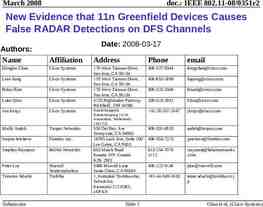Reinhard Schulte, MD,MS, DABR Professor, Radiation Research Loma
39 Slides2.24 MB

Reinhard Schulte, MD,MS, DABR Professor, Radiation Research Loma Linda University Clinical case for ions In his last State of the Union Address to the nation, Principal Investigator Particle President Obama Therapy Research Grant announced a national (P20) initiative to find a cure for UCSF Helen Diller Family cancer, an ambitious "moon Comprehensive Cancer shot" that Vice President Center Joe Biden will direct in the remaining months of the administration Apollo 11 lunar landing, Courtesy NASA

Does Ion Therapy Need a Moon Shot Approach? Ion Beam Therapy: Clinical, Scientific and Technical Challenges There are some parallels with the ambitious competition to land a man on moon and to cure cancers with ion therapy Like the moon landing, a large technological effort may be needed to make it happen Saturn V SC Carbon Gantry at HIMAC 2

Terminology Radiation therapy may be categorized into – External beam therapy – Brachytherapy – Radioimmunotherapy (RIT) External radiation therapy can be further divided into – Photon therapy (Co-60, linacs) – Electron therapy (linacs) Ion Beam Therapy: Clinical, Scientific and Technical Challenges – Fast neutron therapy (cyclotrons) – Charged particle therapy (proton and ion therapy with particle accelerators) This talk will primarily focus on ion therapy with helium or carbon ions, and possibly other ions 3

Outline Radiation therapy in the 21st century – is there a case for ions? What distinguishes ions from protons and photons? (physics and biology) Clinical experience with carbon Ions – Are we on the right track? New initiatives in the development ion therapy in the U.S. Summary & Outlook Ion Beam Therapy: Clinical, Scientific and Technical Challenges 4

Ion Beam Therapy: Clinical, Scientific and Technical Challenges RADIATION THERAPY IN THE 21ST CENTURY – IS THERE A CASE FOR IONS? 5

Modern Radiation Therapy – Any Role for Protons and Ions? Radiation therapy has seen a dramatic development in the last 30 years – New delivery technologies (VMAT, Cyberknife, IMRT, proton therapy) – Improved imaging technology (PET, MRI, 4D CT, imaging guidance) – New fractionation schemes (SBRT, hypofractionation, SRS) – New combination therapies Ion Beam Therapy: Clinical, Scientific and Technical Challenges chemo-radiation molecularly targeted therapeutics – Improved follow-up and patient survivorship care Is there any role for ions? 6

Cancer survival and mortality – where to we stand? "The five-year survival rate for all cancers improved from 51% in the early 1980s to almost 60% in the early 1990s ., since the 1971 National Cancer Act, much of the research into early cancer has paid off" (Press release of the US Dept. of Health and Human Services, 2000) However, a SEER-data-based analysis by Welch et al (JAMA, 2000) found that Ion Beam Therapy: Clinical, Scientific and Technical Challenges – Between 1950 and 1995, 5-year survival increased by more than 25% in only 6 out of 20 most common cancers and by less than 10% in another 6 out of 20 cancer types, with remaining 8 cancers types increasing between 10% and 20% – Increase in 5-year survival was typically related to increase in incidence and earlier detection (prostate cancer) – Mortality rates of most common cancers are increasing or flat 7

The successful cancers Changes in 5-year Survival, Mortality, and Incidence from 1950 to 1995 500% 400% 300% 200% 100% Ion Beam Therapy: Clinical, Scientific and Technical Challenges 0% Prostate Melanoma Testis Bladder Breast -100% 5-year Survival Mortality Incidence 8

The unsuccessful cancers Changes in 5-year Survival, Mortality, and Incidence from 1950 to 1995 300% 250% 200% 150% 100% 50% Ion Beam Therapy: Clinical, Scientific and Technical Challenges 0% Esophagus Brain Lung Liver Pancreas -50% 5-year Survival Mortality Incidence 9

Advancements in Radiation Therapy and their Impact We have seen many exciting incremental technological advancements in RT as a localregional treatment modality, including – 3D Conformal radiotherapy (3DCRT) – Intensity modulated radiation therapy (IMRT) – Stereotactic body radiation therapy (SBRT) – Image-guided radiotherapy (IGRT) Ion Beam Therapy: Clinical, Scientific and Technical Challenges For some sites, this has also led to an improvement in long-term survival For many sites, it has also lead to a reduction of side effects and an improvement in quality of life 10

Local-Regional Control Improves Breast Cancer Survival Ion Beam Therapy: Clinical, Scientific and Technical Challenges Breast cancer is one of few sites where a survival advantage due to better local-regional control with RT has been demonstrated in large meta-analyses, this is on top of additional improvement in control and survival from chemotherapy, hormone therapy, and targeted therapy (HER2-directed) The statistically proven survival advantages do not show earlier than 10-15 years and require large patient numbers These results contrast earlier studies that showed that addition of RT to surgery in breast cancer patients reduces overall survival, most likely due to increased cardiac toxicity with outdated radiation techniques 11

Improved Local-Regional Control after RT Improves Breast Cancer Survival Ion Beam Therapy: Clinical, Scientific and Technical Challenges The Oxford review analysis (Lancet. 2011, 378(9804), 1707– 1716) showing the impact of radiation therapy on breast cancer local recurrence, mortality and death from all causes. Overall, about one breast cancer death was avoided by year 15 for every four recurrences avoided by year 10. 12

Improved Local-Regional Control after RT Improves Breast Cancer Survival especially in patients at higher risk for LR Ion Beam Therapy: Clinical, Scientific and Technical Challenges In women with pN0 disease on average one death from breast cancer is avoided for every four recurrences avoided There is a trend of larger avoidance of death in women with larger risk of local-regional recurrence Absolute reduction in 15-year risk of breast cancer death RT after breast-conserving surgery versus absolute reduction in 10year risk of any recurrence (Lancet 2011) 13

Improved Outcome in RT comes at the Cost of Higher Cardiac Toxicity Relative risk (RR) of cardiac death after RT for left versus right breast cancer (laterality) Laterality after dx, RR (95% CI) Diagnosis 10 y 10 - 14 y 1973-1982 1.2 (1.04-1.38) 1.52 (1.11-1.82) 1983-1992 1.04 (0.91-1.18) 1.27 (0.99-1.63) 1993-2001 0.96 (0.82-1.12) NA Bird, Swain Clin Cancer Res. 2008;14(1):14-24. Ion Beam Therapy: Clinical, Scientific and Technical Challenges RCTs conducted over the last 30 years demonstrated beneficial local control and survival after BCT/mastectomy RT. With dose-sparing modern approaches, the absolute benefits of radiation may be increased 14

Risk of ischemic heart disease in women after RT for breast cancer – Can protons reduce it? Ion Beam Therapy: Clinical, Scientific and Technical Challenges A population-based case control study by Darby et al. demonstrated that the risk of MCEs increased progressively with the cardiac radiation dose, by 7.4 percent for each 1 Gy of radiation to the heart This initiated a first randomized U.S. trial to compare the cardiac late effects of proton therapy with those of photon therapy for breast cancer funded by PCORI Rate of increase of major coronary events vs. mean RT dose to the Heart, as Compared with the estimated rate with no radiation exposure to the heart. (Darby et al., N Engl J Med. 2013;368(11):987-98 15

Cure of Advanced Cancer – An Elusive Dream? There are still many advanced tumors which are diagnosed late and that even if they are still local or regional cannot be cured with RT nor with any other therapy Possible reasons (pointing to ion therapy) include Ion Beam Therapy: Clinical, Scientific and Technical Challenges – Advanced tumors have a higher fraction of hypoxic and aggressive stem cells that are geared towards survival, they tend to be resistant RT, invasive, & drive further mutations (tumor heterogeneity) – Advanced tumors are generally larger and contain more stem cells that need to be eliminated – Advanced tumors have a larger propensity for local infiltration and regional and distant spread 16

Potential reasons why higher doses of low-LET may be ineffective in advanced cancers Advanced tumors including lung, esophageal, and malignant brain tumors (GBMs) have shown no further increase in local & regional control with dose escalation Potential reasons (pointing to the use of ions) could be Ion Beam Therapy: Clinical, Scientific and Technical Challenges – Increased toxicity in normal tissues surrounding the tumor (e.g., central location of lung tumors) – Circulating tumor cells (CTCs) attack and overwhelm the immune system – cancer initiated immune suppression (all tumors shedding CTCs) – We may not know the true target harboring the most aggressive part of the tumors (GBMs) 17

Ion Beam Therapy: Clinical, Scientific and Technical Challenges WHAT DISTINGUISHES IONS FROM PROTONS AND PHOTONS? (PHYSICS AND BIOLOGY) 18

Physics of Photons, Protons, Ions Ion Beam Therapy: Clinical, Scientific and Technical Challenges Charged particles comprised of protons or heavier ions share the Bragg peak characteristic, which makes them dose-volume sparing RT modalities Heavier ions have a larger peak to plateau ratio Heavier ions have a sharper lateral dose falloff (penumbra) Heavier ions have a distal fragmentation (dose) tail 19

Radiobiological Characteristics Ion Beam Therapy: Clinical, Scientific and Technical Challenges Protons and heavier ions have excellent doselocalization properties Ions produce a much denser track structure (primary ionizations and secondary electrons) The closely spaced ionizations lead to a larger number of complex and clustered DSBs, which are difficult to repair and less sensitive to the presence of absence of oxygen W.T. Chu, Proc. of 10th heavy ion charged particle therapy symposium, 2011. 20

Ion Beam Therapy: Clinical, Scientific and Technical Challenges CLINICAL EXPERIENCE WITH CARBON IONS – ARE WE ON THE RIGHT TRACK? 21

Exploiting the improved doselocalization & higher BE of ions Ion Beam Therapy: Clinical, Scientific and Technical Challenges 22

Clinical experience at NIRS The HIMAC facility of NIRS in Tokyo, Japan has accumulated the largest clinical experience with carbon ions since 1994 (2 years after the LBNL program ended) Experience was gathered with well-planned Phase I/II dose escalation and subsequent prospective followup of patients in several different tumor sites, including Ion Beam Therapy: Clinical, Scientific and Technical Challenges – – – – – – – – Bone and Soft-tissue Tumors Lung Cancer (early and advanced) Locally Recurrent Rectal Cancer Prostate Cancer (early and advanced) Skull Base and Head-and-Neck Tumors Hepatocellular Carcinoma Locally Advanced Cervical Cancer Pancreatic Cancer 23

Clinical Experience with Bone and Soft Tissue Sarcomas at NIRS Ion Beam Therapy: Clinical, Scientific and Technical Challenges A clinical trial for these rare tumors started in June of 1996 By 2010 more than 700 patients had been treated, increasing at an annual rate of 100-150 patients Sacral chordomas, which have a high surgical morbidity and many presenting with a huge sacral mass, sacral chordomas accounted for the largest proportion ( 100 patients) Local control was achieved in about 80% of patients, comparable to excessive surgery Ninety percent of the patients retained the ability to walk on their own 24

Clinical Experience with Lung Tumors at NIRS Ion Beam Therapy: Clinical, Scientific and Technical Challenges CIRT was first used for lung cancer in November of 1999, and a total of 918 were treated during the first 11 years. For the initial treatment, a dose escalation study of 18 fractions over 6 weeks was performed for peripheral stage I lung cancer, central lung cancer, and lung cancer that had invaded the chest wall (as preoperative irradiation) For peripheral type stage I non-small-cell lung cancer, there was subsequent reduction in the fractions from 9 fractions (3 weeks) to 4 fractions (1 week) Comparing to surgery and SBRT, it appears that local control and survival rates are similar 25

Clinical Experience with Prostate Cancer at NIRS Ion Beam Therapy: Clinical, Scientific and Technical Challenges A clinical trial started in June 1995 and 1202 cases of prostate cancer had been treated by July 2010 Ninety-six (96) cases were treated in early dose escalation trials, 175 cases in a phase II clinical trial, 909 cases thereafter In 2007 the therapy scheme was shortened from 20 times in 5 weeks to 16 times in 4 weeks Eligible patients had locally confined and path- confirmed prostate cancer case; they were classified into 3 groups (high risk, intermediate risk and low risk) according to the clinical stage, initial PSA value, and pathological Gleason score Considering 50 % of the cases were high risk, the 5-year overall survival rate of 95 % , relapse-free rate of more than 90 % appears satisfactory Rectal and urinary toxicity appears lower that with IMRT and protons 26

Clinical Experience with Hepatocellular Carcinoma at NIRS Ion Beam Therapy: Clinical, Scientific and Technical Challenges HCC is an increasingly common tumors mostly caused by chronic infection with Hepatitis virus B or C and liver cirrhosis A series of 4 dose escalation studies of carbon ion radiotherapy for the treatment of HCC as an alternative to surgery or transarterial chemo-embolization were conducted between June 1995 and August 2005 to determine the optimal dose when given in 15 fractions over five weeks. Eventually, the treatment schedule was simplified from 15 fractions over five weeks to two fractions for two days. The majority of patients had relapsed after or were refractory to other therapies, ore were judged as non-responsive to conventional therapies The 1-, 3-, and 5-year local control rates were in the range of 89%– 98%, 81%–95%, and 81%–95%, respectively. A shorter duration tended to yield a higher local Hepatic toxicity was mild for most patients. The proportions of patients whose Child-Pugh score increased from baseline by two or more points due to late tended to be smaller with a smaller number of fractions. 27

Clinical Experience with Pancreatic Cancer at NIRS Ion Beam Therapy: Clinical, Scientific and Technical Challenges Pancreatic cancer is the fifth leading cause of cancer death in Japan and is considered to be one of the most lethal cancers. An initial phase I/II dose escalation clinical trial for pre-operative CIRT with 16 fractions in 4 weeks for resectable pancreatic was started in 2000 Subsequent clinical trials aimed at shortening the fraction size to 8 fractions in 2 weeks and treating patients with locally advanced pancreatic cancer followed by an ongoing clinical trial of CIRT combined with anticancer drug gemcitabine starting in 2005 Twenty-three (23) patients underwent preoperative CIRT between April 2003 through February 2010. Nineteen (19) patients had curative resection (resection rate 83%), while the remaining 4 patients did not undergo surgery due to liver metastases or because surgery was refused. In the 19 surgical cases, the 3-year local control rates and overall survival rates were 100% and 40%, respectively. Thirty-eight (38) patients underwent primary chemo-CIRT between April 2007 and February 2010. Local control by increased along with CIRT dose escalation. In the high dose group, in which patients were irradiated with at least 45GyE, local recurrence developed in only one out of the 14 patients. The one year local control rate was 86%. The median survival was 18 months, and the 1-year and 2-year overall survival rates were 66% and 34%, respectively Updated results show further improvement of 3-year overall survival rates now approaching 50% 28

Summary of Clinical Experience with Carbon Ions Ion Beam Therapy: Clinical, Scientific and Technical Challenges Clinical experience with ion therapy accumulated at HIMAC and now at several other centers in Europe and Asia, is promising in terms of local control, overall survival, and lack of severe side effects However, there is not level I evidence from randomized clinical trials involving or comparing ion therapy The bulk of the NIRS experience seems to points toward better result with shorter fractionation schedules (hypofractionation) A randomized comparison with IMRT/SBRT for the tumors sites selected at NIRS seems warranted 29

Ion Beam Therapy: Clinical, Scientific and Technical Challenges NEW INITIATIVES IN THE DEVELOPMENT ION THERAPY IN THE U.S. 30

DOE-NCI Workshop on Ion Beam Therapy, Bethesda, MD, January 2013 More than 60 participants from medicine, physics, biology & business were charged with addressing 4 topics: Ion Beam Therapy: Clinical, Scientific and Technical Challenges – Charge 1: Identify pertinent clinical applications and radiobiological requirements – Charge 2: Assess corresponding beam requirements for future treatment facilities – Charge 3: Assess the corresponding beam delivery system requirements – Charge 4: Identify R&D activities needed to bridge the gap 31

P20 Announcement Feb & Nov 2013 Ion Beam Therapy: Clinical, Scientific and Technical Challenges 32

UCSF – P20 Application 2014 – Review Summary Statement Ion Beam Therapy: Clinical, Scientific and Technical Challenges 33

UCSF- NAPTA P20 Grant –Specific Aims Administrative Core Pilot Research Ion Beam Therapy: Clinical, Scientific and Technical Challenges – Specific Aim 1: Create Functional Teams – Specific Aim 2: Create Organizational Structure – Specific Aim 3: Perform Pilot Research (enhance infrastructure – Specific Aim 1: Demonstrate practicability of IGAPRT with pCT – Specific Aim 2: Advance radiobiological modeling – Specific Aim 3: Develop IGAPRT using the results of 1 and 2 34

A New Ion RT Radiobiology? Ion Beam Therapy: Clinical, Scientific and Technical Challenges The traditional line of investigating the benefits of ion beam therapy has been to treat radioresistant cancers with ions. New research should focus on interaction of high LET and hypofractionation with the immune system and targeting innate immunosuppressive mechanisms The body of work suggests that RT generates a trigger of the innate immune system to activate tumor-specific T cells overcoming some of the barriers to tumor rejection For 2016, we are planning to launch a collaborative research program addressing the compelling question whether high LET ions have an advantage in this respect 35

FDG-PET Scans of lung cancer patient treated with ipilimumab and RT for a single intrahepatic metastasis Ion Beam Therapy: Clinical, Scientific and Technical Challenges Golden & Formenti Oncoimmunology 2014 36

Clinical Implications of the “New Radiobiology” A differential immune response to high LET ions (such as carbon) may have a much broader application for the treatment of cancer patients Ions may then be of value in treating patients with common cancers suffering from systemic disease. This broader application would make the use of ions far more cost-effective because: – far fewer fractions would be required – the technical requirements would be less challenging Ion Beam Therapy: Clinical, Scientific and Technical Challenges The nature of future clinical ion trials would be modified: – systemic disease survival endpoints will be reached earlier – and more patients will be available. 37

Summary & Outlook Ion Beam Therapy: Clinical, Scientific and Technical Challenges Ion therapy has come a long way, and warrants further investigation Major promises include better dose localization (already with helium) and higher biological effectiveness A new radiobiology should be further explored, leading to a reduction of the metastatic incidence or burden in particular with hypofractionated high LET radiation Additional technology development is required to close the gap to advanced photon therapy techniques Major efforts should be directed toward more compact and less expensive technology 38

Thank you! Ion Beam Therapy: Clinical, Scientific and Technical Challenges 39






